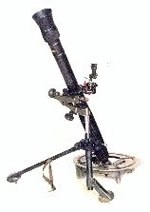This article includes a list of general references, but it lacks sufficient corresponding inline citations .(December 2014) |
Parts of this article (those related to Article) need to be updated. The reason given is: Danish Division has been disbanded and a new unit, Multinational Division North, has been formed as of 01-01-2019.(February 2021) |
| Danish Division Multinational Division North | |
|---|---|
 | |
| Active | 1 January 1997 – present (28 years, 8 months) |
| Country | |
| Branch | |
| Size | Division HQ |
| Garrison/HQ | Haderslev Kaserne |
| Patron | Knud Lavard [1] |
| Motto(s) | Velox Et Acer (Quick And Sharp) |
| Website | Official Facebook |
| Commanders | |
| Current commander | Major General Jette Albinus [2] |
| Notable commanders | R. Allerup |
The Danish Division (Danish : Danske Division), short DDIV, is the only remaining military land division in Denmark. It was created on 1 January 1997 as the successor of Jutland Division. It is one of the now-three Divisions of Multinational Corps North East (MNC NE), the German-Danish-Polish Corps, the successor to the former German-Danish Allied Land Forces Schleswig-Holstein and Jutland (LANDJUT), a NATO Allied Forces Northern Europe formation.
Contents
- List of Structure by year
- 2019–Dissolved: Became part of Multinational Division (North) along with framework partner nations, Latvia and Estonia
- 2011–2018
- 2005–2011
- 2000–2005
- 1997–2000
- Equipment from 1997–2005
- References
- External links
Due to the Danish Defence agreement 2005–2009 Danish Division is currently undergoing major reorganisation, which will not only reduce the divisional strength but also transform it from the originally mobilization unit into a permanent and available formation. As a result of this, DDIV will possibly be affiliated with Allied Rapid Reaction Corps instead. The current structure consists of an armoured brigade, which is the main combat formation, and a training brigade, plus divisional troops. The armoured brigade consists of a single tank battalion, a reconnaissance battalion and two armoured infantry battalions.















